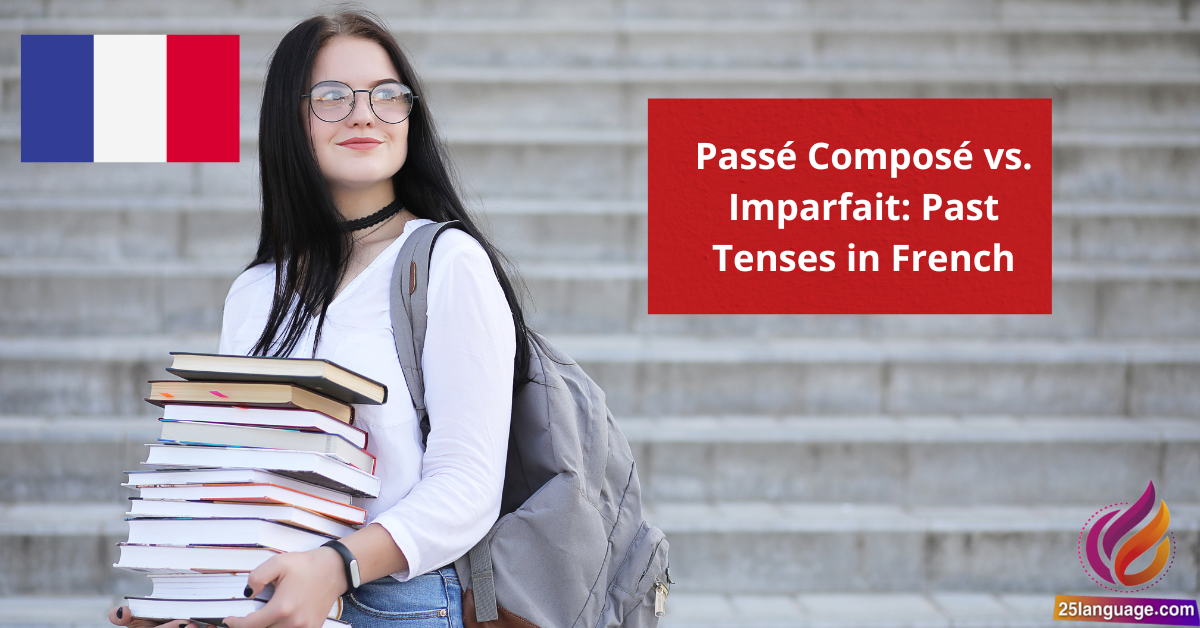Passé Composé vs. Imparfait and Past Tenses in French

Understanding the difference between passé composé and imparfait is essential for anyone looking to express themselves accurately in French.Both tenses allow you to talk about the past, but they each serve unique purposes. Passé composé is like snapping a rapid photo of a completed action, while imparfait paints a broader, more descriptive picture of ongoing or habitual situations. Dive in as we explore how to master these vital tenses and bring your French storytelling to life!
Understanding french Past Tenses: Navigating Passé Composé and imparfait
Understanding the use of passé composé and imparfait is crucial for effective interaction in French. the passé composé is used to express completed actions in the past, notably ones that are specific or have a clear endpoint. It is formed using an auxiliary verb (either être or avoir) followed by the past participle of the main verb. For instance:
- J’ai mangé une pomme. (I ate an apple.)
- Elle est allée au cinéma. (She went to the cinema.)
- Nous avons fini nos devoirs. (We finished our homework.)
On the other hand, imparfait is used to describe ongoing or habitual actions in the past, background details, or situations. It is formed by taking the present tense nous form of the verb, dropping the -ons ending, and adding the appropriate imperfect endings: -ais, -ais, -ait, -ions, -iez, -aient. Examples include:
- Je mangeais une pomme. (I was eating an apple.)
- Elle allait souvent au cinéma. (She often went to the cinema.)
- Nous faisions nos devoirs. (We were doing our homework.)
| French Example | Rule | English Translation |
|---|---|---|
| J’ai mangé une pomme. | Completed action, passé composé | I ate an apple. |
| Je mangeais une pomme. | Ongoing action, imparfait | I was eating an apple. |
| Elle est allée au cinéma. | Specific event,passé composé | She went to the cinema. |
| Elle allait souvent au cinéma. | Habitual action, imparfait | She frequently enough went to the cinema. |
Mastering the Art of Storytelling: When to Use Passé Composé and Imparfait
In french, the passé composé and imparfait are two key verb tenses used to express past actions, but they serve different purposes in storytelling. The passé composé is primarily used for actions that are completed and have a clear beginning and end. It’s often used for specific events or occurrences. Consider the following example:
- Elle a fini ses devoirs. (She finished her homework.)
- Nous sommes allés au cinéma. (We went to the cinema.)
On the other hand, the imparfait is utilized for actions that were ongoing in the past, describing background settings, habitual actions, or situations that were happening simultaneously occurring as another action. For instance:
- Il faisait beau et les oiseaux chantaient. (It was sunny, and the birds were singing.)
- Quand j’étais enfant,je jouais souvent dans le parc. (When I was a child, I often played in the park.)
| French Example | Tense | English Translation |
|---|---|---|
| Elle a fini ses devoirs. | Passé Composé | she finished her homework. |
| Il faisait beau. | Imparfait | It was sunny. |
| Nous sommes allés au cinéma. | Passé composé | We went to the cinema. |
| Quand j’étais enfant, je jouais souvent. | Imparfait | When I was a child, I frequently enough played. |
Unlocking the past: Practical Tips for Using Passé Composé and Imparfait
The French language has two primary past tenses: the passé composé and the imparfait. The passé composé is used to express completed actions that occurred at a specific moment in the past. It is formed using an auxiliary verb (either avoir or être) and the past participle of the main verb. For example,“J’ai mangé” translates to “I ate” or “I have eaten.” In contrast, the imparfait describes ongoing or habitual actions in the past and sets the scene. It is indeed formed by taking the nous form of the present tense, removing the -ons, and adding the appropriate endings: -ais, -ais, -ait, -ions, -iez, or -aient. For instance, “Je mangeais” means “I was eating” or “I used to eat.”
- Passé Composé: Completed actions
- Imparfait: Ongoing or habitual actions
- Formation:
- Passé composé: Auxiliary verb + past participle
- Imparfait: Nous form – ons + endings
| French Example | Rule | English Translation |
|---|---|---|
| Il a regardé la télévision. | Passé composé: Completed action | He watched television. |
| quand j’étais enfant, je jouais dehors. | Imparfait: Ongoing action | When I was a child, I used to play outside. |
| Nous avons visité Paris l’été dernier. | Passé composé: Specific past action | We visited Paris last summer. |
| Elle lisait souvent des livres. | Imparfait: Habitual action | She often read books. |
From Action to Description: Distinguishing Between Passé Composé and Imparfait
In French, the passé composé is used to express actions that are completed or events that occurred at a specific point in time. It often answers the question “What happened?” and is formed by combining the auxiliary verbs avoir or être in the present tense with the past participle of the main verb. Here are some key characteristics of the passé composé:
- Used for actions that happened once or a specific number of times.
- Conveys a sense of completion or a change in state.
- Frequently enough used with time expressions like hier (yesterday), la semaine dernière (last week), or tout à coup (suddenly).
For example:
- J’ai mangé une pomme. (I ate an apple.)
- Elle est allée au cinéma. (She went to the movies.)
Conversely, the imparfait is used to describe ongoing actions, habits, or background situations in the past. it addresses the question “What was happening?” or “What used to happen?” The imparfait is essential for setting the scene and conveying a sense of duration. Here are some essential points regarding the imparfait:
- used for habitual actions or things that were happening over a period of time.
- Describes background facts or conditions.
- Commonly used with expressions like souvent (often), chaque semaine (every week), or pendant que (while).
For example:
- Quand j’étais enfant, je jouais au parc. (When I was a child, I used to play in the park.)
- Il pleuvait pendant que nous dînions. (It was raining while we were having dinner.)
| French Example | Rule | English Translation |
|---|---|---|
| J’ai étudié pour l’examen. | Passé Composé: completed action. | I studied for the exam. |
| Nous regardions la télévision. | Imparfait: Ongoing action. | We were watching television. |
| Elle a fini son projet hier. | Passé Composé: Completed action. | She finished her project yesterday. |
| Il faisait froid en hiver. | Imparfait: Background description. | It was cold in winter. |
The Way Forward
Conclusion
Félicitations! You have now taken a significant step in mastering two essential past tenses in French: the passé composé and the imparfait. Throughout this lesson, you’ve discovered that while both tenses refer to actions that occurred in the past, they serve different purposes and convey distinct nuances.
The passé composé allows you to express completed actions with a clear time frame, focusing on specific moments and events. In contrast, the imparfait paints a broader picture, evoking ongoing past situations, habitual actions, or background details. Remember the key indicators associated with each tense—words like “souvent” or “chaque année” for the imparfait, and “hier” or “tout à coup” for the passé composé—to help guide your choices in conversation.
Now,as you continue your journey in learning French,I encourage you to practice using these tenses in your daily conversations or writing. Try to tell a story from your past using both tenses, highlighting the completed actions with the passé composé while enriching it with context through the imparfait. This will not only enhance your communication skills but also deepen your understanding of the language.
Keep up the great work, and remember that mastery comes with practice. Embrace opportunities to use what you’ve learned, and soon, you will find yourself speaking with confidence and fluency. Bon courage, and happy learning!




























